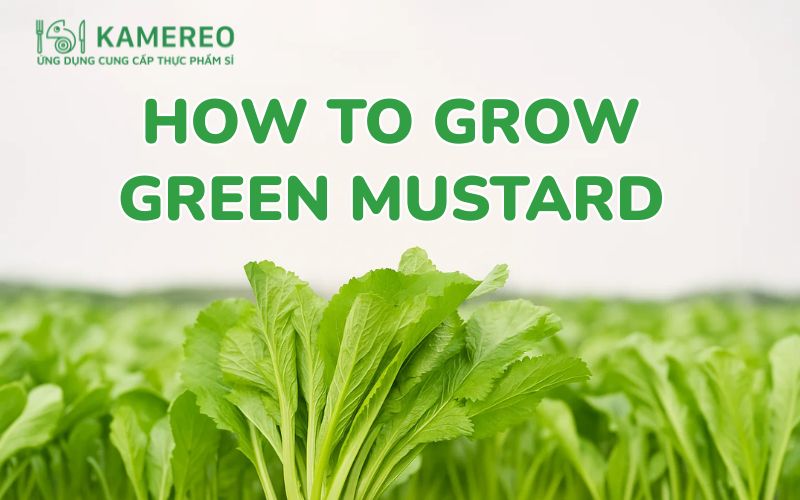Growing mustard greens at home is not complicated if you master the basic techniques and care for the plants properly. From choosing seeds, preparing the soil to planting techniques – just a little bit of attention is all it takes to harvest clean, fresh vegetables. Read Kamereo’s detailed guide below and get started today!
Tools and Materials Needed
To grow mustard greens at home, you’ll need to prepare a few basic items:
- Mustard green seeds
- Styrofoam boxes or pots
- Planting soil
- Organic fertilizer
- Other: Water container, cloth, etc.
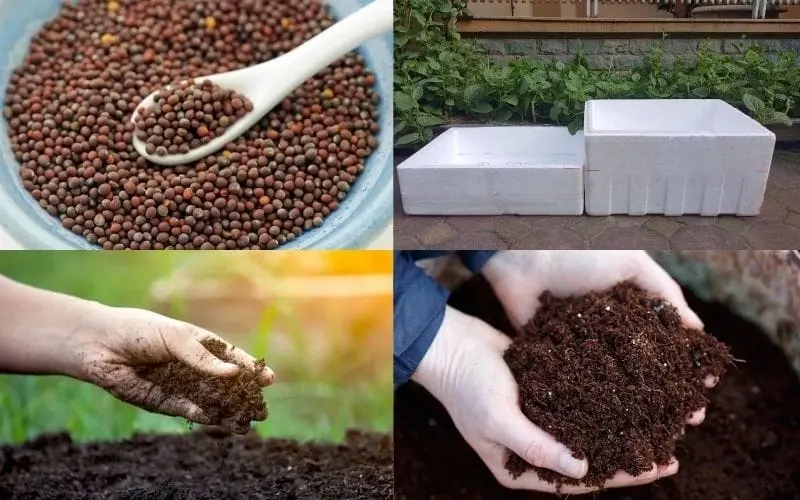
💡 Helpful Tips
- Choosing seeds: Prioritize intact, non-moldy seeds with clear origins to ensure high germination rates.
- Soil preparation: Ideal soil should have a pH of 6.5 – 7, be loose, and drain well. You can mix your own using the ratio: 3 parts loam : 2 parts burnt rice husk : 2 parts coconut fiber : 3 parts worm compost.
- Preparing containers: If the container doesn’t already have drainage holes, be sure to drill some to prevent root rot when watering.
Simple Steps to Grow Mustard Greens
Mustard greens are easy to grow and adapt well to many soil types. Just follow these steps and you’ll soon have your own clean vegetable garden at home:
Prepare Suitable Planting Soil
To ensure healthy plant growth, ideal soil should be highly aerated, rich in humus, and drain well during the rainy season while retaining moisture during dry periods.
Thoroughly till and loosen the planned planting area, then remove weeds and leftover crops from the previous season. Next, apply lime and organic fertilizer, then let the soil rest for 10–14 days to eliminate pathogens and improve texture.
💡 Helpful Tips
- For garden planting areas, raise beds about 0.8m wide and 10–15cm high (raise higher, around 20cm, during the rainy season). Leave 20cm between rows. Ensure the bed surface is flat and even.
- If planting during the dry season, cover the bed surface with a tarp. Use a tarp about 90cm wide, secured with bamboo pegs. Then, punch holes spaced 20cm apart between rows and 30cm between plants, with hole depths of 6–8cm.
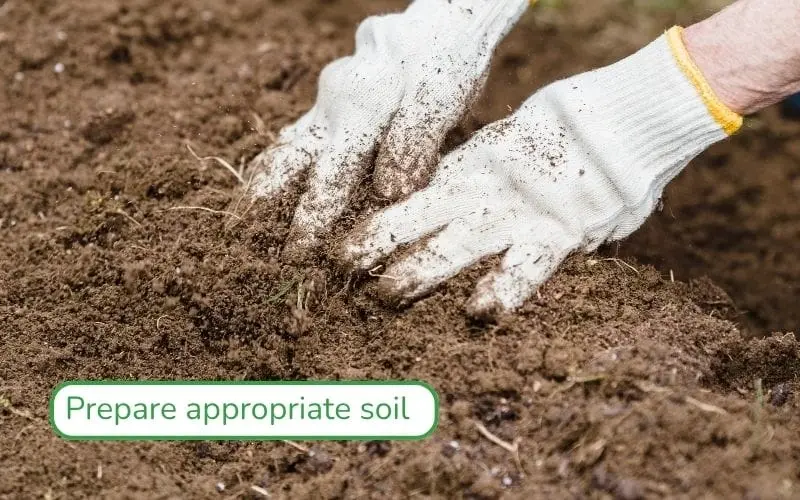
Sow Mustard Green Seeds
To ensure quick and even germination, you need to prepare your seeds properly:
- Soak mustard green seeds in warm water at about 40–50°C for 1–2 hours.
- After soaking, wrap the seeds in a moist cloth for 24 hours until they begin to sprout.
- Once sprouted, you can sow them directly into seedling trays at a density of 2 seeds per tray. For an area of 500m², you’ll need approximately 8000 seedlings.
During dry seasons, use shade nets and water adequately. In contrast, during rainy seasons, protect from heavy rain and ensure proper drainage for healthy seedling growth.
After about 10–12 days of sowing, when
seedlings have developed 2–3 true leaves, they are ready for transplanting.
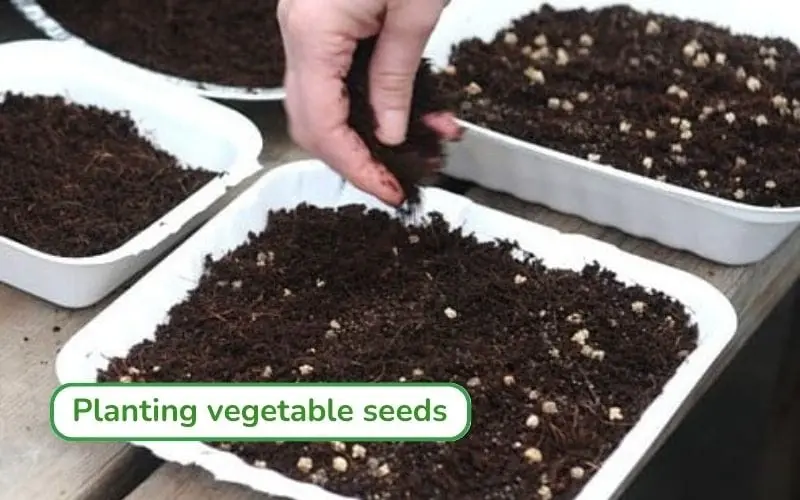
Transplant Seedlings
The best time to transplant seedlings is in the cool afternoon, when the weather is mild. Gently cut open the seedling pouch, being careful not to break the soil ball.
Place the seedling into the pre-punched hole and cover with loose soil. Firmly press the base of the plant and water thoroughly to maintain moisture and help the plant stand upright.
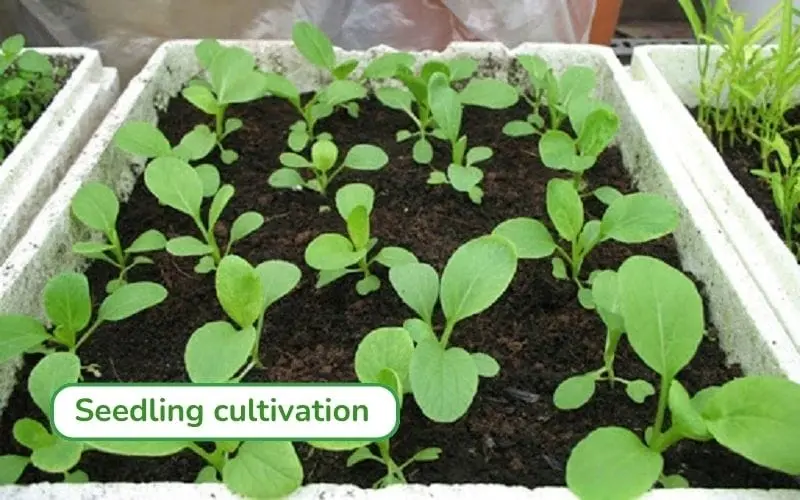
Replanting
About 2–3 days after transplanting, check and replace any dead or underdeveloped seedlings. Replanting should also be done in the cool afternoon, and water immediately afterward to help the new seedlings take root quickly.
Mustard Green Care Techniques
To help your mustard greens grow healthily, maintain a proper care routine including watering, weeding, and pest control:
Watering
Mustard greens love moisture but are prone to root rot in waterlogged soil. So ensure moderate moisture and water them regularly:
- In hot seasons, water twice daily—once in the early morning and once in the late afternoon. Avoid watering at noon to prevent heat shock.
- During the rainy season or when humidity is high, reduce watering to once daily. Make sure the drainage system works well to prevent root rot.
You should use a watering can with a showerhead or invest in a drip irrigation system to avoid uprooting seedlings or washing away the soil.
Weeding
Weeds not only compete for nutrients but also harbor pests. Regularly check your garden and remove weeds by hand or with gardening tools. While weeding, lightly loosen the soil around the plant base to improve aeration and nutrient absorption.

Pest Prevention
Mustard greens are susceptible to pests such as flea beetles, cutworms, diamondback moths, tip borers, and diseases like rot and soft rot. For safe and effective prevention, use biological products like garlic-chili-ginger GE, pineapple GE, cinnamon GE, etc. These are both eco-friendly and safe.
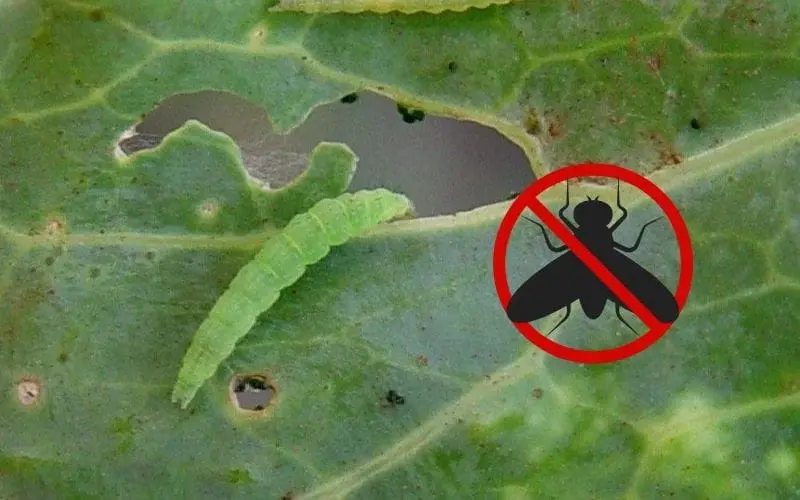
Fertilizing
About 10 days after transplanting, mustard greens begin to require more nutrients to grow vigorously. You should apply organic fertilizers such as worm compost, chicken manure, or cow manure. Maintain a fertilizing schedule of once every 7 days to supply nutrients throughout the plant’s life cycle.
Frequently Asked Questions
When is the best time to grow mustard greens?
Mustard greens can be grown year-round, but the most favorable season for rapid growth and high yields is the Winter-Spring crop. This is also the most commonly grown season. You can sow seeds in August, September, or October for a bountiful harvest.
How long does it take to harvest mustard greens?
Mustard greens are typically ready for harvest about 30–40 days after sowing. When harvesting, cut close to the base to encourage regrowth or to prepare for the next planting cycle.
How long after sowing do mustard greens sprout?
Typically, mustard green seeds begin sprouting 3–5 days after sowing, depending on weather conditions and seed quality.
Conclusion
With the detailed instructions above, we hope you now clearly understand growing mustard greens at home – from soil preparation, sowing, to plant care and pest control. Don’t forget to follow Kamereo’s Food and Lifestyle section to discover more helpful gardening tips and select fresh, high-quality vegetables every day!
See more:



